- Saturday, November 23, 2024
Prime minister rejects western media perception of India as he eyes third term

By: Amit Roy
INDIA’S prime minister, Narendra Modi, does not give press interviews, so why did he choose to give one just before Christmas to the Financial Times, of all papers?
The FT, a respected newspaper with digital subscribers all over the world, has been sustained in its relentless attacks on the ruling Modi government. For example, it has targeted the businessman Gautam Adani, who has been accused of benefiting unfairly through his perceived closeness to the Indian prime minister. A number of FT writers have also been very critical of Modi, who will be seeking a third term in the general election that are due to be held between April and May this year.
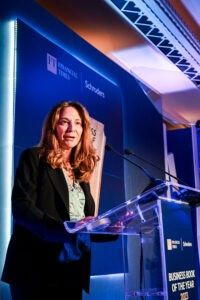
Modi’s advisers were probably able to persuade him that he should take the FT head-on and that his answers would be fed back, mostly importantly translated into Hindi, to influence voters in India.
“Today, the people of India have very different aspirations from the ones they had 10 years back,” Modi told the paper.
He was “dressed in a cream kurta and rust-coloured sleeveless jacket, and immaculately barbered and manicured”.
“They realise that our nation is on the cusp of a take-off,” he added. “They want this flight to be expedited, and they know the best party to ensure this is the one which brought them this far.”
The interview was conducted at the prime minister’s official residence in Delhi by the FT’s editor, Roula Khalaf; the paper’s south Asia bureau chief, John Reed; and Benjamin Parkin, another of its journalists based in the Indian capital.
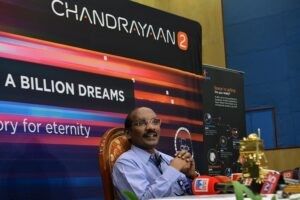
Modi later posted a message on X, formerly Twitter, that he had spoken about a wide range of issues, both local and global in an extensive interview with the FT.
He said: “I have talked about the development strides in India, how India is growing at a record pace, exponential rise in startups, the unique people-powered mass movements aimed at improving lives of people, and more. India’s transition from being one of the ‘Fragile Five’ a decade ago to becoming the fifth largest economy has captured the attention of the world, which sees it as a ray of hope and an important stakeholder in furthering global prosperity.”
As a financial newspaper, the FT can influence investor sentiment, which is currently broadly sympathetic to India, especially when the alternative is China.
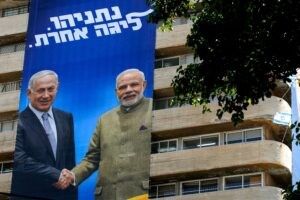
The 2,500-word interview, billed as “The Big Read”, began by setting the scene for the encounter: “Narendra Modi’s official residence in New Delhi is on what used to be called Race Course Road. In 2016, it changed to Lok Kalyan Marg [LKM] or ‘People’s Welfare Street’, a name more in keeping for a twice-elected leader with populist leanings and a flair for discarding the trappings of India’s colonial past.
“Past a cordon of airport-style security, the recently renovated complex (called ‘Seven LKM’ by his staff) has parading peacocks and inner courtyards with ornate flower displays.
Inside, a meeting rooms boasts maps of the world painted on ceiling frescoes, while the cabinet room is inscribed with lines from the preamble to India’s constitution. It is from this quiet residence that Modi has not only managed India’s growing international influence, but from where, in the view of many of his domestic opponents, he could also represent a risk to that constitution.
“Rising from a large desk to greet visitors, Modi exudes confidence at the end of a year when India has constantly been in global focus.
“The country has surpassed China by population and is being touted by world leaders, business consultants and banks as an alternative investment destination for a world that is increasingly suspicious of Beijing.
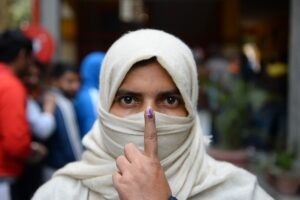
“Many Indians and global leaders alike are now preparing for what they expect to be five more years of Modi. The 73-yearold leader will be seeking a third term in office …..He insists that he is ‘very confident of victory’ thanks to a record ‘of solid change in the common man’s life’.”
The FT said it interviewed Modi as his Bharatiya Janata Party (BJP) was celebrating victories in three out of five closely fought state elections, seen as a dry run for a vote expected between April and May, when India’s more than 940 million eligible voters will head to the polls.
It pointed out that a third-term victory would be a vindication for Modi’s legions of supporters, who say he has built India’s economy and global esteem, improved hundreds of millions of people’s lives and put the majority Hindu religion at the centre of public life.
His opposition, led by the Indian National Congress and MPs including Rahul Gandhi, have joined forces in an alliance under the acronym I.N.D.I.A., which promises to “safeguard democracy and the constitution” in the face of what they say is an attack on the secular principles of the country’s founders. During his nearly 10 years in office, “critics have accused Modi’s government of cracking down on rivals, curtailing civil society and discriminating against the country’s large Muslim minority”.
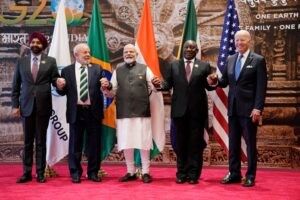
In the rare interview that included additional written responses, the prime minister addressed some pointed questions, including on the status of India’s Muslim minority, friction with the US and Canada caused by alleged plots for extrajudicial killings and constitutional amendment – though he brushed aside criticisms of his government’s economic and democratic record.
“Our critics are entitled to their opinions and the freedom to express them. However, there is a fundamental issue with such allegations, which often appear as criticisms,” he said about the concerns that have been expressed over the health of the Indian democracy.
“These claims not only insult the intelligence of the Indian people, but also underestimate their deep commitment to values like diversity and democracy. Any talk of amending the constitution is meaningless,” Modi said.
In August 2023, India landed its Chandrayaan-3 unmanned probe near the south pole of the moon. Just days later, it hosted the world’s leading economies at a G20 summit meant to elevate the country’s status, and that of Modi, who peered down from posters around New Delhi as world leaders arrived.
India promoted itself as a vishwaguru, or teacher to the world, in everything from its digital inclusion drive to its campaign to promote the cultivation of crops such as climate-resilient millets.
India also hosted a “Voice of the Global South” summit and successfully championed the African Union’s admission as a permanent G20 member in September. Modi maintained close ties with Russia’s president, Vladimir Putin, in keeping with India’s decades-old non-alignment policy, but also cemented a closer-than-ever relationship with Joe Biden during a June state visit to the US when the two countries signed a raft of agreements in areas ranging from jet engines to quantum computing.
“The world is interconnected as well as interdependent,” Modi was quoted as saying. “Our foremost guiding principle in foreign affairs is our national interest. This stance allows us to engage with various nations in a manner that respects mutual interests and acknowledges the complexities of contemporary geopolitics.”
When pressed on whether India’s closer relations with the US might be described as an alliance, Modi said relations are on an “upward trajectory” despite allegations made by federal prosecutors last month that an Indian government official directed a plot to assassinate a prominent American Sikh separatist leader on US soil. “Today, the India-US relationship is broader in engagement, deeper in understanding and warmer in friendship than ever before.”
On the Israel-Hamas conflict, where his government has mostly refrained from criticising Benjamin Netanyahu’s government – a key partner with which it shares technology and a nationalist world view – Modi noted that India had supported the delivery of humanitarian aid to Gaza, while reiterating its support for a two-state solution.
India, long a staunch supporter of the Palestinian cause, has grown closer to Israel under Modi, the first Indian prime minister to visit the country. “I remain in touch with the leaders in the region,” he said. “If there is anything India can do to take forward efforts towards peace, we will certainly do so.”
The idea of an economically emerging India is not in itself a new one for the world’s largest developing nation. But one reason the narrative has taken hold so powerfully lately is because Modi reinforces it, with his talk of India building a $5 trillion economy and having entered an Amrit Kaal (“age of nectar” or golden age in Sanskrit).
It is also because tensions between Washington and Beijing have prompted a search by western democracies for alternative trading and diplomatic partners to China.
In his independence day speech on August 15, Modi vowed to make India a developed country by 2047, when it celebrates its 100th anniversary, although some economists have pointed out it will need to grow faster than its current six to seven per cent annual rate to achieve that.
Modi pointed out that India has progressed from being one of the “Fragile Five” (identified by a Morgan Stanley researcher in 2013, the year before he took power, describing economies overly reliant on foreign investment to finance their current account deficits) to the world’s fifth largest economy. Infrastructure building has taken off during his premiership, and Modi’s office rattles off the numbers: a doubling of airports to 149 from 74 less than a decade ago; 905km of metro lines, from 248km a decade ago; 706 medical colleges, from 387 before he took office.
Multinational companies, including Apple and its supplier Foxconn, are building capacity in India as part of a “China plus one” diversification drive away from the world’s largest manufacturing centre. Some have gone so far as to predict that it might replicate China’s take-off decades ago, with a confluence of fast economic growth, technological advances and job creation in manufacturing, construction and other sectors that transformed the country and the lives of its people.
Modi prides himself on being a capable administrator, someone who can cut through the country’s vast bureaucracy and get things done – from large economic reform to improving welfare delivery for the hundreds of millions of Indians who depend on services such as cash transfers and free food.
But despite a major infrastructure push and its status as the world’s fastest-growing big economy, India is not creating enough jobs, presenting a vulnerable point for the BJP as it prepares to embark on a national campaign.
Corruption, administrative hurdles and the skills gap among youth are other obstacles to business about which companies, Indian as well as foreign, complain – and which some people believe could prevent the country from replicating China’s manufacturing-led economic take-off.
“You have done a comparison with China, but it might be more apt to compare India with other democracies,” Modi replied when asked about this.
“It’s important to recognise that India wouldn’t have achieved the status of the world’s fastest growing economy if the issues you’ve highlighted were as pervasive as suggested,” he argued. “Often, these concerns stem from perceptions, and altering perceptions sometimes takes time.”
Modi also pointed to the presence of Indian-origin CEOs at top companies such as Google and Microsoft as counter-evidence of a skills gap – although some analysts have pointed to the fact that so many skilled Indians go abroad as evidence that there are too few opportunities back home.
“It’s not a matter of needing to bring them back,” Modi said, when asked whether India should not be trying to lure them to return to the country of their birth.
“Rather, our goal is to create such an environment in India that it naturally gets people to have a stake in India.”
He went to add: “We aspire to create conditions where every individual sees value in being in India to invest and expand their operations here.”
Some Modi government officials have privately spoken about reforms such as liberalisation of labour laws should the prime minister win a third term.
“We envision a system where anyone from around the world feels at home in India, where our processes and standards are familiar and welcoming,” he said.
“That is the kind of inclusive, global-standard system we aspire to build.”
Modi’s most vocal opponents, led by Gandhi – the BJP’s chief political nemesis – have questioned whether India’s democracy will survive a third Modi term.
Gandhi has been among the MPs who criticised Modi last year after a short seller’s report prompted questions about the Adani Group, the politically connected conglomerate from the prime minister’s state, Gujarat.
The controversy around the Adani Group has highlighted concerns about the concentration of India’s economy around a few big family business groups.
Anti-Muslim hate speech has proliferated under BJP rule, the party’s critics say, and the BJP has no serving MPs or senior government ministers who are Muslim.
When asked what future the Muslim minority has in India, Modi pointed instead to the economic success of India’s Parsees, who he describes as a “religious micro-minority residing in India”.
“Despite facing persecution elsewhere in the world, they have found a safe haven in India, living happily and prospering,” Modi said, in a response that makes no direct reference to the roughly 200 million Muslims living in the country. “That shows that the Indian society itself has no feeling of discrimination towards any religious minority.”
A question about the Modi government’s alleged crackdown on his critics elicited a long and hearty laugh.
“There is a whole ecosystem that is using the freedom available in our country to hurl these allegations at us every day, through editorials, TV channels, social media, videos, tweets,” Modi said. “They have the right to do so. But others have an equal right to respond with facts.”
Modi pointed to the long history of outsiders who underestimated India. “In 1947, when India became independent, the British who left made a lot of very dire predictions about India’s future.
But we have seen that those predictions and preconceptions have all been proven false.
Nushrratt Bharuccha on Chhorii, pressure of comparison with Lapachhapi, upcoming…
Abhimanyu Dassani on Meenakshi Sundareshwar, how his mom Bhagyashree reacted…
It’s a wrap for Prabhas, Kriti Sanon and Saif Ali…